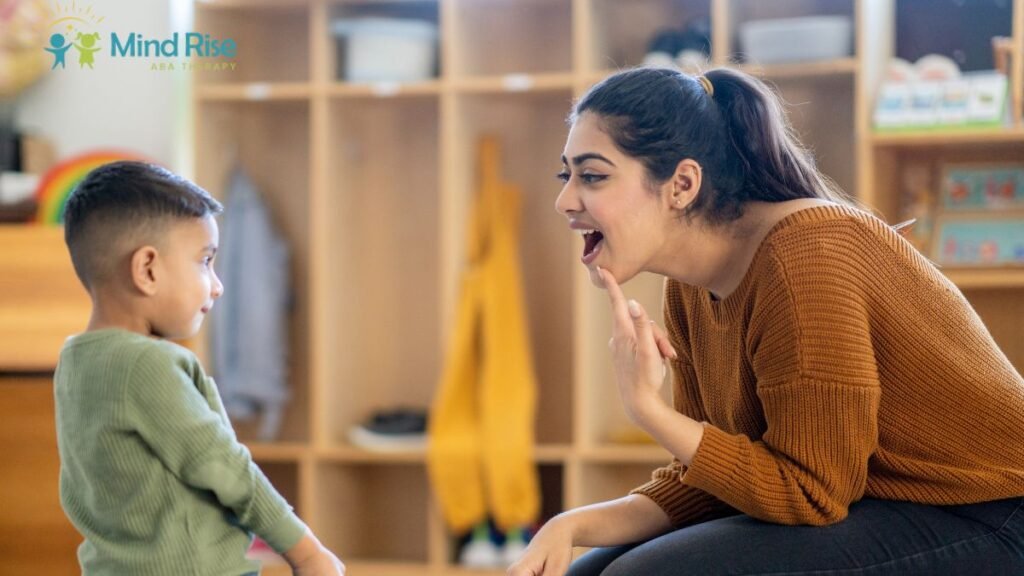Key Points:
- Autism is a developmental condition that shapes how children learn and interact, while special education is a structured system that supports students with various disabilities.
- Autism-specific supports target communication, behavior, and sensory needs, while special education services cover a broader range of learning challenges.
- Parents who understand both can better advocate for IEPs, therapies, and combined strategies that strengthen long-term growth.
Parents often feel uncertain about the overlap between autism and special education. Autism is a condition, while special education is the framework of support available for students with different disabilities. The two are connected but not interchangeable.
When families search for clarity, they want practical answers: Does autism automatically qualify a child for special education? What kinds of services are offered in schools? How do outside therapies fit into the picture?
This article breaks down these differences, explains how schools approach autism, and offers guidance on navigating services so children receive meaningful support both inside and outside the classroom.
What Is Autism?
Autism spectrum disorder (ASD) is a developmental condition that affects communication, behavior, and sensory processing. Signs vary widely. Some children have advanced language but struggle with social cues. Others are nonverbal and rely on devices or visual systems to communicate.
According to the 2023 data from the Centers for Disease Control and Prevention (CDC), about 1 in 36 U.S. children has autism. The condition is lifelong, but interventions such as Applied Behavior Analysis (ABA), speech therapy, and occupational therapy can significantly improve independence.
Autism is not a learning disability, though it impacts learning. Children may excel in visual thinking but struggle in traditional classroom formats. Recognizing these differences is why schools must provide individualized approaches.
What Is Special Education?
Special education is the system of services schools provide for children with disabilities. It ensures equal access to learning under the Individuals with Disabilities Education Act (IDEA). Special education covers conditions like:
- Autism
- ADHD
- Intellectual disabilities
- Dyslexia and other learning disorders
- Hearing and vision impairments
Services may include:
- Specialized instruction in core subjects
- Speech, occupational, or physical therapy
- Social skills or behavioral supports
- Accommodations such as extra test time or sensory breaks
Unlike a medical diagnosis, special education eligibility depends on whether a disability affects school performance.

Autism vs. Special Education: Core Differences
While connected, autism and special education are not the same.
- Definition: Autism is a condition; special education is a legal and educational system.
- Eligibility: Autism requires a medical/psychological diagnosis. Special education requires an evaluation of educational impact.
- Services: Autism therapy often includes ABA or sensory interventions. Special education provides broader services across all disability types.
- Focus: Autism interventions target behavior, social skills, and sensory needs. Special education may address academics, accessibility, and overall participation.
How Autism Fits Within Special Education
Children with autism may qualify for special education under IDEA’s “Autism” category. Some may only need small accommodations like visual schedules, while others may require self-contained classrooms with intensive support. Examples:
- A student with strong academics but sensory sensitivities may need noise-canceling headphones and breaks.
- A child with limited speech may get daily speech therapy and classroom communication support.
- A student who struggles with transitions may benefit from visual prompts and behavior plans.
Schools adjust services based on the individual profile rather than a “one-size-fits-all” approach.
Individualized Education Programs (IEPs)
IEPs are legally binding documents that guide special education services. For children with autism, they outline goals, accommodations, and progress measures. Common autism-related IEP features:
- Communication: Speech therapy, augmentative communication devices, or language goals.
- Behavior: Positive Behavior Intervention Plans (BIPs) that replace problem behaviors with functional skills.
- Social skills: Peer buddy programs or structured practice in group settings.
- Sensory: Tools like fidget items, weighted lap pads, or sensory-friendly spaces.
Parents are equal members of the IEP team. They can request evaluations, bring private provider reports, and ensure goals reflect real-life needs.
Common Parent Challenges
Parents often face confusion and frustration when navigating autism and special education together.
- Diagnosis vs. eligibility: A child may have an autism diagnosis but still be denied special education if the school claims academic performance is unaffected.
- Inconsistent support: Services can vary widely between school districts.
- Behavior misunderstandings: Teachers may see meltdowns as “misbehavior” instead of communication.
- Limited resources: Rural or underfunded schools may lack trained autism specialists.
- IEP disputes: Parents may need to push for services like speech therapy or social skills training that schools undervalue.
Understanding legal rights and building collaborative relationships with schools is key to overcoming these barriers.

Autism Interventions Beyond the School System
Special education helps in school, but it rarely covers all a child’s needs. Families often turn to outside therapies like ABA to fill gaps.
A review on NCBI (PMC) highlights the role of functional communication training (FCT), positive reinforcement, and differential reinforcement in managing aggressive behaviors in adolescents with autism. These approaches work by teaching functional alternatives to challenging behaviors, which in turn support better participation in learning environments. Other outside supports may include:
- Occupational therapy for fine motor or sensory issues
- Speech therapy for expressive and receptive language
- Social skills groups led by specialists
When combined with school supports, these therapies create consistency across environments.
Why Understanding the Differences Matters
Parents who clearly understand autism vs. special education can advocate more effectively. A diagnosis does not automatically provide services. Conversely, special education eligibility does not cover all therapy needs outside school. This distinction allows parents to:
- Request specific evaluations for eligibility
- Balance IEP goals with private therapy goals
- Push for evidence-based supports in the classroom
- Plan for both academic progress and independent life skills
Without this clarity, children risk falling through gaps between medical and educational systems.
Practical Tips for Parents
- Document everything: Keep copies of reports, IEPs, and communication logs.
- Request clarity: Ask how autism specifically impacts classroom performance when schools resist services.
- Observe classrooms: Seeing strategies in action can help you reinforce them at home.
- Build partnerships: Approach teachers and therapists as teammates, not opponents.
- Seek outside help: If school services feel limited, explore ABA, speech, or occupational therapy privately.
- Know your rights: Learn IDEA protections and state laws to ensure fair treatment.
- Review progress regularly: Goals should be updated as your child grows.
These steps create a balance between school-provided support and external therapies.
Support Your Child’s Growth
Autism and special education intersect but are not interchangeable. Special education ensures access to learning, while autism therapies like ABA address communication, independence, and behavioral challenges. Together, they provide children with a fuller support system.
Every child deserves more than access. They deserve opportunities to thrive. ABA therapy services in Virginia help children with autism build daily living skills, strengthen communication, and reduce stress in school and at home.
At Mind Rise ABA, we provide these supports with a focus on long-term growth. Reach out today to learn how personalized ABA therapy can support your child’s growth and create lasting progress.

